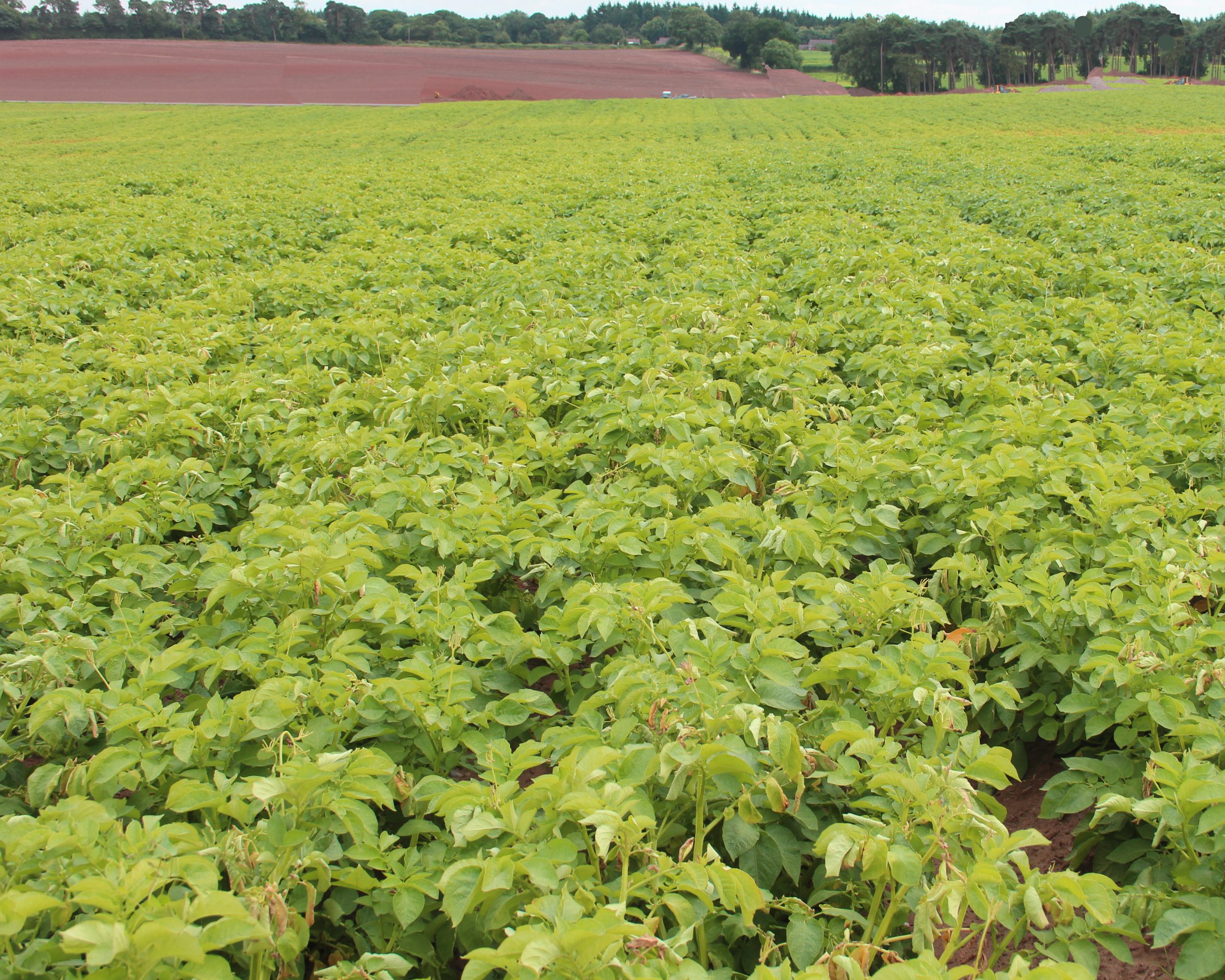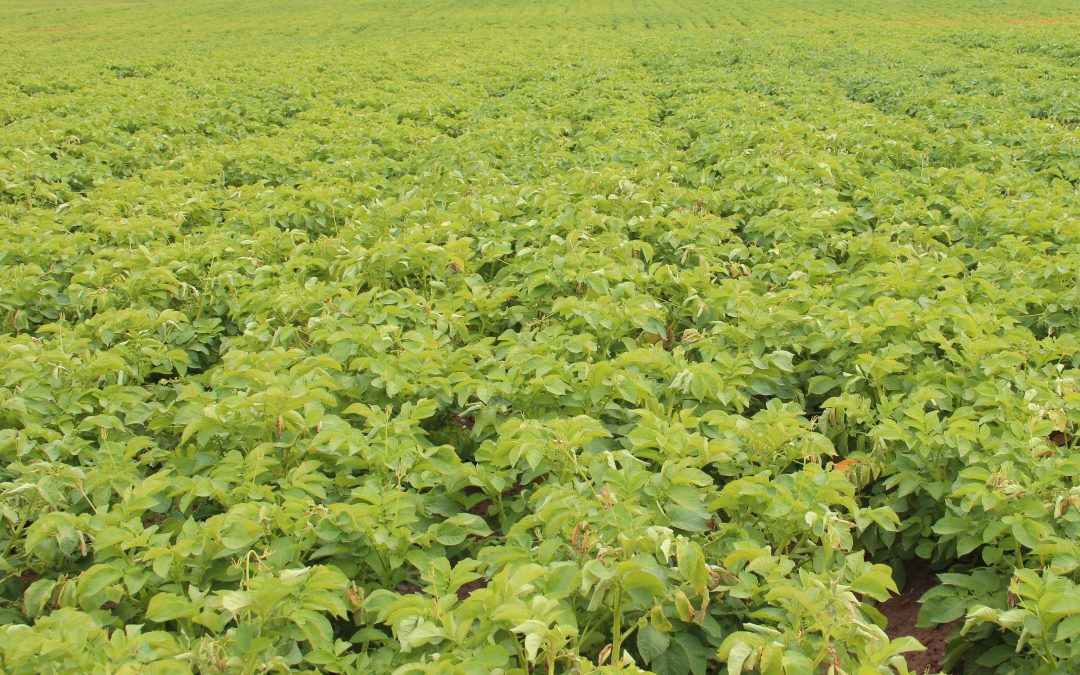Heat and drought along with other abiotic stresses can take their toll on crops in many ways:
- A lack of water disturbs the uptake of fluid through the roots which in turn stops the delivery of vital nutrients and other important molecules to the cells. Water stressed crops can show reduced or stunted growth, low flower numbers and small fruits. These crops are also more vulnerable to disease and pest attacks.
- Excessive heat damages leaves, and over a sustained period causes senescence or ‘brown out’ and finally shedding, which is why, after a long hot summer, autumn always seems to arrive quickly. In sustained periods of high heat, the photosynthesis is reduced and the plant focuses on survival, which results in it using its own food reserves to try and survive. In cereals, flowering and seed production process are reduced or halted, while in potatoes tuber bulking is halted, as the plant goes into survival mode – a disaster for crop yield.
Alleviating the effects of heat and drought stress
A lack of water and excessive heat doesn’t have to be detrimental or yield limiting. 20 years of biostimulant trials have shown time and again that the combinations of organic and inorganic bioactive molecules can stimulate plant growth, fruiting productivity, as well abiotic and abiotic stress resistance.
This is achieved because ‘biostimulants’ such as natural plant hormones, amino acids, organic acids and many other compounds can improve the plants’ ability to absorb, distribute and utilise the nutrients that are available. By improving the efficiency of the plants chemical processes, they require less energy to survive, thereby helping to reduce stress caused from heat.
For crops to maximise the water that is available to them in times of intermittent or non-existent rainfall, biostimulants can be used from planting and during growth stages to promote strong root development and especially an abundance of the fine root hairs. These can maximise the individual plant’s ability to penetrate soil pockets to absorb soil water through active and passive absorption.
Selecting a biostimulant
When making a product selection we would always advise looking for a company that has been established for a long time and is happy to share their trial results with you, even better if they are freely available online.
Always take the opportunity to discuss your particular crop or issue with the team, often two heads are better than one and there are very few issues that haven’t ever been seen before – we are here to chat ….


